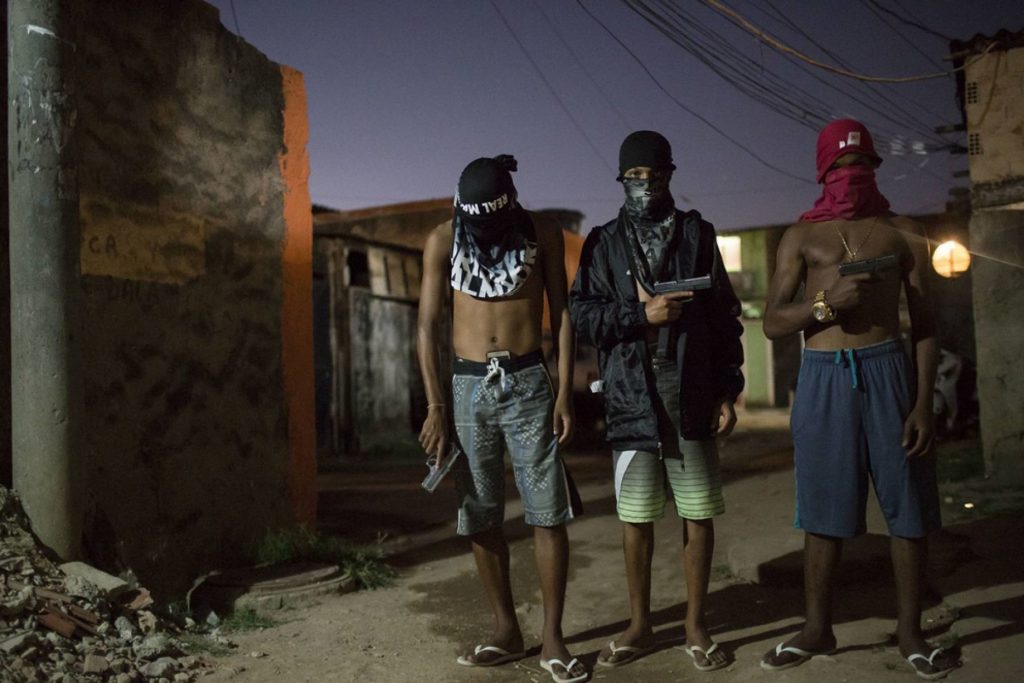AP photo
By
Ricardo Swire
Not long ago an internal security law enforcement tactical team seized a valuable supply of high-powered rifles at Rio de Janeiro–Antonio Carlos Jobim International Airport, the weaponry was shipped from Miami, Florida on the Atlantic coast.
On Thursday June 1, 2017 a Rio de Janeiro Civil Police operation, planned over twelve months, intercepted fourteen AR-15 semi-automatic rifles, forty-five AK-47s, one Heckler & Kotch G3 Rifle, magazine chargers, quantities of 7.62mm and 5.56mm ammunition. The firepower was hidden among electrical heaters, transported aboard two commercial airline flights. Official import declaration forms dated May 23 to May 30, 2017 awaited Brazil’s Federal Revenue Service release. The guns valued BRL$1.6 million had individual serial numbers filed off. Brazil is the Western Hemisphere‘s second largest firearms manufacturer after America. Intelligence data linked the sixty smuggled military grade firearms to escalating turf clashes between the Comando Vermelho (Red Command) and First Capital Command (PCC) organizations.
Both mega gangs import high-caliber firearms from neighboring Bolivia and El Salvador, unofficially sourced out of military and police armories. In one scenario four Bolivians were intercepted transporting twenty-two firearms worth US$15,000. The shipment was stopped by US law enforcement in Santa Cruz, California. Twenty-two guns comprised of fifteen assault rifles, five pistols and two revolvers, dispatched from Rhode Island consigned to an identified PCC member in Brazil.
In another case a high ranking Salvadorian Army officer sold fifty firearms, including four AR-15 semi-automatic rifles, on the black market. The four commercial versions of the American made M-16 assault rifle were among guns stolen from El Salvador’s Amy armory. Regional smuggling patterns reflect proximity of a country to the US contributes to greater illegal firearm inflows. America’s nearest neighbor Mexico registered a yearly cross-border influx of more than two hundred and twelve thousand, illegal guns, compliments US “straw purchasers.”
A straw purchase hides the real gun buyer’s identity. Often characters unable to pass US Federal background checks. Legitimate persons are contracted as fronts to buy firearms on the invisible purchaser’s behalf. If caught, by the US Bureau of Alcohol, Tobacco, Firearms & Explosives (ATF), straw purchasers face ten years imprisonment. Brazil’s Agency Against Robbery & Theft of Police Cargo linked the recently identified criminal syndicate to thirty other illegally imported firearm shipments.
The gun smuggling activity supplied one thousand eight hundred semi-automatic rifles to buyers in the Greater Rio community. Brazil’s favelas or ghettos retail similar weaponry for BRL$70,000 or US$21,355 each. A May 2017 Federal Police operation in Cidade Alta district confiscated thirty-two assault rifles, four pistols and twelve hand grenades. Illegal armaments in the possession of forty-five Red Command members.
Brazil’s crime patterns highlight revolvers and pistols as favorite locally made killing tools. 2017 Brazil Federal Police records note two hundred and fifty illegal handguns confiscated to date. For many years Brazil and South, Central and Latin American countries were devoted US firearms customers. Regional leftist governments sourced Russian assault rifles and ammunition. Today both the US and Russia compete with firearm exports from Austria, Belgium, Czech Republic, Germany, Israel, Italy, Spain and Turkey.
Ricardo Swire
Ricardo Swire is the Principal Consultant at R-L-H Security Consultants & Business Support Services and writes on a number of important issues.



No Comments Yet!
You can be first to comment this post!